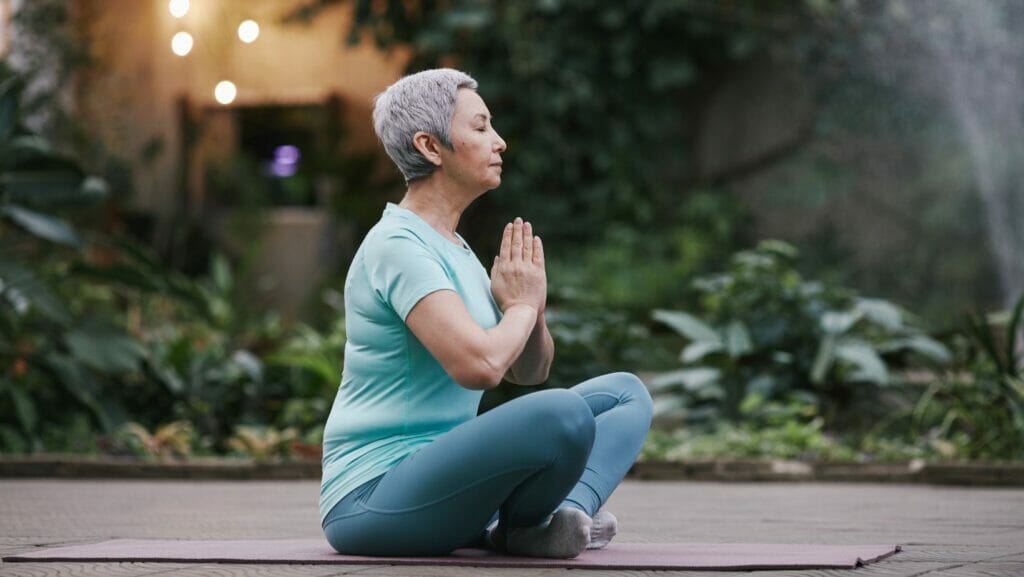
Yoga is a practice that extends far beyond the mat. When you dive into your 200-hour yoga teacher training, one of the foundational topics you will learn about are the first two of the Eight Limbs of Yoga – the Yamas and Niyamas. Deborah Adele, author of The Yamas & Niyamas: Exploring Yoga’s Ethical Practice, describes these yogic guidelines as jewels — gems of wisdom that direct us along the path toward a joyful and experiential life.
Here we’ll cover the Yamas, which are composed of five restraints that include: non-harming (ahimsa), truthfulness (satya), non-stealing (asteya), non-excess (brahmacharya), and non-possessiveness (aparigraha).
The first Yama is ahimsa, or non-harming. This practice asks that we hold positive regard for everything and everyone, and that we practice kindness towards ourselves and others. Ahimsa is usually rooted in fear, which creates violence in the form of action and/or words. To practice ahimsa, it’s important that we explore, in our own lives, the fears that are there to keep us safe and alive, and the fears we hold on to that keep us from living a whole and joyful life. Author Deborah Adele, suggests that we can shift ourselves out of fear and feelings of powerlessness by practicing gratitude, trusting in the moment, and thinking empathetically about others.
The second Yama is satya, or truthfulness. Satya asks that we see and speak things as they are rather than how we want to see them. This starts with practicing truthfulness and honesty with ourselves. Truth is deeply connected to non-harming and compassion. It never comes from a place of self-indulgence and is never used as a weapon, but instead as a lantern to help people (ourselves included) to find their way when they find themselves in the dark along their path.
The third Yama is asteya, or non-stealing. This yoga practice asks that we don’t take anything that isn’t ours. While we may think of this broadly as not taking items that aren’t ours, there are many ways we steal. We steal time and joy from ourselves when we stay in habits and patterns that don’t serve us. We can steal time and truth from others if we choose to not be honest or transparent. We steal from the Earth when we live in thoughtless abundance, and wasteful excess. Asteya is often rooted in not feeling worthy or good enough. “If I just had ______ then I would be better/ happier.” When we connect to our wholeness and when we allow ourselves to see the wealth and abundance we already have that has nothing to do with material possessions or what others possess, then we can embrace this practice of asteya and live in the joy of the present.
The fourth Yama is brahmacharya, or non-excess. While this was originally thought to be specific to celibacy, the practice is rooted in the idea of living life in a way that keeps moments, relationships, actions, and passions sacred. To ask ourselves if the things we do and surround ourselves with are life giving rather than draining and excessive. There can often be a heaviness to doing things in excess. This isn’t to put actions in baskets of “good” and “bad”, but instead to keep us aware and thoughtful of our choices and actions to continually invite meaning and balance into our lives.
The fifth Yama is aparigraha, or non-possessiveness or non-holding. This is the ability to not be attached or in need of control. What we often try to control, ends up controlling us.
When embarking on a yoga teacher training journey, you can be sure that you will dive into the Yamas, the first limb of Yoga, to learn the practices that lead us down a path toward a joyful, connected, and well-lived life. Whether you consider yourself spiritual, non-spiritual, have practiced yoga for years, or are new to these ideas and practices, the Yamas are five helpful tools in which we can turn to to help us support ourselves, each other, and the world around us.
